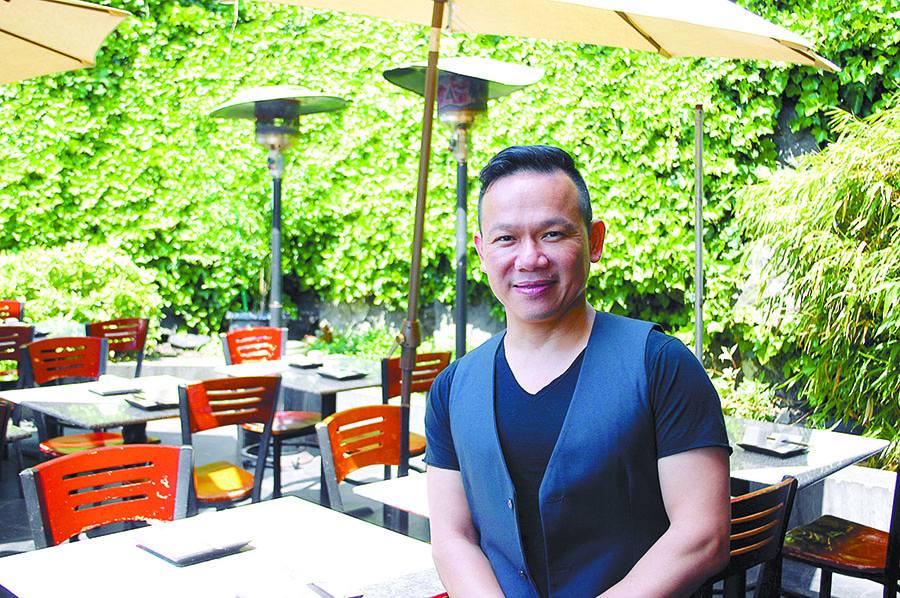Like any wildlife professor worth his salt, John Marzluff has eaten his share of crow. “It tastes poignant, yet not overbearing,” deadpans the the bird-savvy University of Washington prof, a nationally renowned expert on all things crow. Nothing about these capricious corvids escapes his notice, not even the rich texture and gamy flavor of their breast meat. “It goes quite well with a nice merlot and sauteed red peppers.”
When it comes to crows and, well, pretty much any bird, Marzluff is the man. After all, he’s been bird-dogging birds for the better part of 40 years. Last week, in fact, a CBS news crew flocked to his cluttered university office, where a “Beware of Bird Attack” placard reclines atop his floor-to-ceiling bookcase, which is abundant with bird books and wood-carved ducks and mallards.
The network is doing a feature on crow behavior, and who better to ask about their twisty ways than the guy who once published a story in Psychology Today that made the case that crows seldom forget a face? During the interview, Marzluff, who, refreshingly, eschews the usual academic jargon, cited Humphrey Bogart’s famous toast to Ingrid Bergman: “Here’s looking at you, kid.” The title of the CBS piece: “Here’s Looking at You, Bird.”
“They wanted to talk about how crows reward people with treats, and I have learned that they will,” says Marzluff. “If you feed them, they will often reward you with something. They’ll put in your bird feeder, as an exchange for food you give them, a shiny piece of glass, or maybe a charm from a necklace. I’ve heard about a man who got his false teeth back.”
Marzluff’s latest contribution to the canon of crow is a new idea: that birds can bring more than song (or headache, as is often the case with crows) to a community. They can, he says, create economic vitality in our cities.
As a co-author of a recent study in the journal Urban Ecosystems with UW environmental economics professor Sergey Rabotyagov and Humboldt State University lecturer Barbara Clucas, Marzluff found that birds might actually increase home values. “In Seattle,” he notes, “a neighborhood with a nearby forest, or that has parks and green spaces, has residents that are more satisfied with their lives, and home values are 5 to 10 percent higher than in neighborhoods without areas that attract birds. This report shows that our interactions with birds actually have a high economic return to the community where you live.”
The three-year study, endearingly titled “How much is that birdie my backyard?”, focuses exclusively on two cities, Seattle and Berlin. Why Berlin? “Because it is the birthplace for urban ecology,” explains Marzluff.
The study also explored people’s perceptions and feelings about the crow, in comparison to the equally ubiquitous yet more popular finch, a small reddish-colored songbird. Researchers in both cities went door to door, asking hundreds of households in various neighborhoods—from those densely dotted with apartments to more rural enclaves—how they viewed these two bird species; how much, if anything, they spend on bird feed, nesting materials, and birdbaths; and how much they might ante up for conservation efforts.
“No one,” says Clucas, “has really looked at what people will be willing to pay for these more common species, ones that aren’t necessarily endangered or threatened. We wanted to address that because people living in urban areas don’t encounter endangered species on a daily basis.”
Unsurprisingly, on the goodwill scale, the finch fared much better than the crow, at least on this side of the Atlantic. In Berlin the crow commands a certain modicum of respect—and believe it or not, Berliners would shell out a “small amount” of euros to increase their squawking ranks, though many wouldn’t mind seeing thieving magpies (another corvid species) fly the coup. In Seattle, though, many residents, says Prof. Rabotyagov, “would pay to see the crow population reduced.”
“Our [negative] perception of the crow really goes back to the medieval days when crows would scavenge the bodies of the dead,” says Marzluff. “In other cultures, the crow is revered for carrying the spirit of the dead into the afterlife.” Elsewhere, the crow is revered on the plate. “In Tokyo, the crow breast meat is the newest delicacy in sushi,” says Marzluff.
Birds are big business
in the U.S. An estimated 50 million people in America feed the birds who flutter about their neighborhoods, contributing to a $4 billion industry. In Seattle alone, estimates Rabotyagov, bird-loving residents spend $107 million annually on the care and feeding of birds, or about $70 per adult—compared to a national average of $17.
Marzluff, meanwhile, set off for Burns, Ore., following our visit last Thursday. No way he’d miss the Harney County Migrating Bird Festival, which for 34 years has been a huge magnet for avid bird watchers from around the country. There promise to be plenty of waterfowl, shorebirds, cranes, and raptors to see crossing the desert skies of eastern Oregon. No crows, though. The professor might have to settle for chicken breast instead.
econklin@seattleweekly.com







